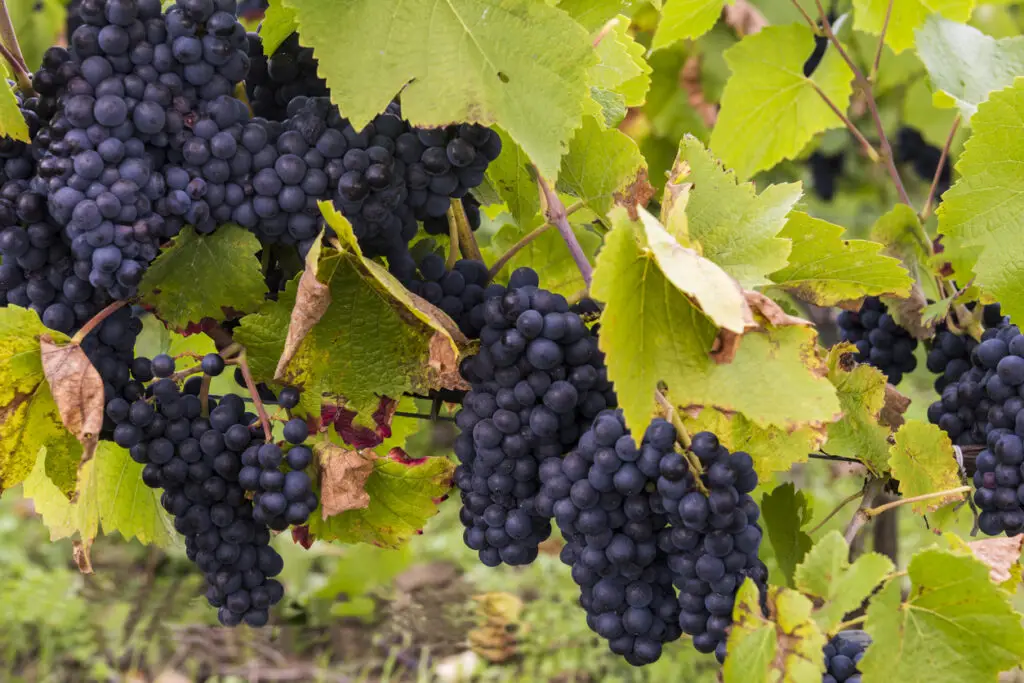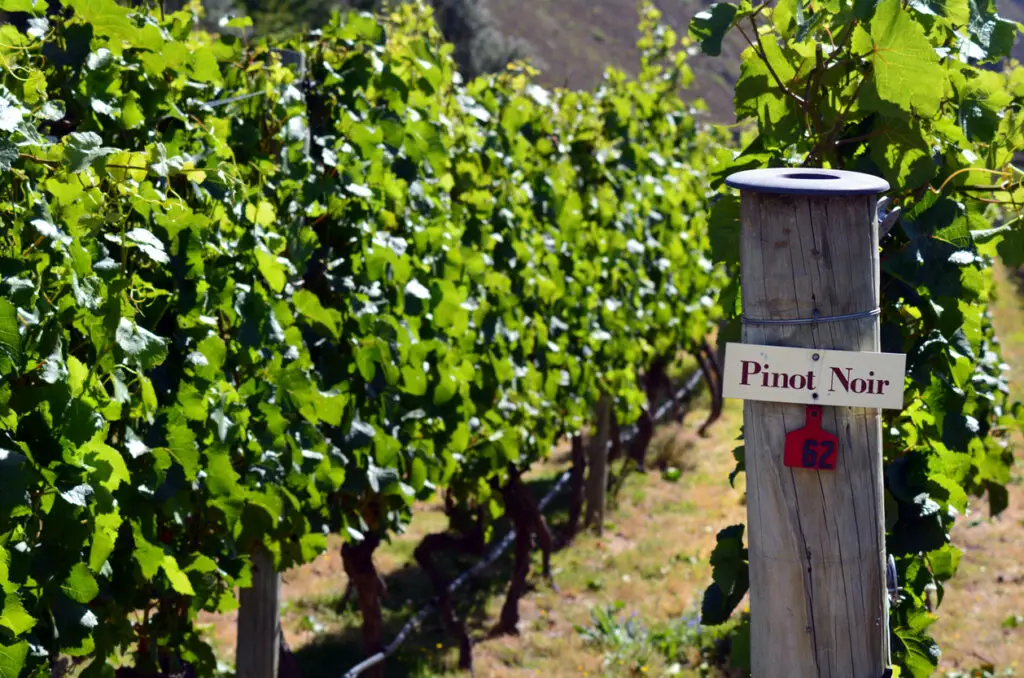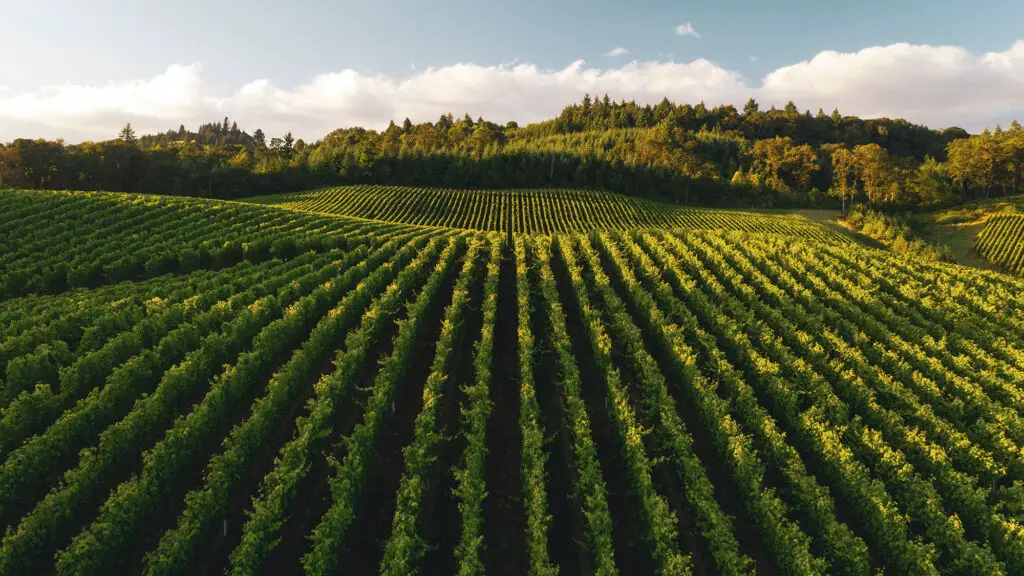Pinot Noir is a wine name everyone has heard of. It is a luxurious wine that is saved for fancy dinner parties and events. But really, why is Pinot Noir expensive?
Pinot Noir is one of the most expensive grapes to grow. They require very particular growing conditions and lots of special care. And even after caring for Pinot Noir grapes correctly, the vines produce a very small amount of fruit. Once the Pinot Noir grapes are pressed, they are aged in French oak barrels – which are also very costly.
As you know, one of the world’s largest countries in the world to produce wine is France. They make over 50 to 60 million liters per year, which equates to 7-8 billion bottles. French wines are made to accompany the food, as French people are real gourmets.
In France, not a single dinner goes without a bottle of wine, and the selection of wine and food pairing is mandatory. Now we will get to know french wine types and in particular Pinot Noir.
We will also go deeper to find out why Pinot Noir is expensive.
French Wines
Now try to google “french wine types,” and you will see the top 100 french wines or 50 best French wines as a result. And if you google “best french wines,” there you find a bunch of different suggestions like “best value,” “best cheap,” “best red,” and a thousand other likewise keyword phrases.
So you can imagine how varied the French wine selection is. Let’s talk about the ones I have set aside for you. There are also a few chosen expensive ones that may not be pleasant for your pocket. We will see especially why Pinot Noir is expensive (or wine types also made from Pinot Noir grapes).
Note that here you will find winemaking regions to classify wine types in France.
Bordeaux

Most popular french wines are from Bordeaux. This is one of the largest French winemaking regions and certainly one of the most famous ones in the world. People always confuse Bordeaux as one certain wine type, but it is not true, of course. Let’s see which wines come from Bordeaux.
A large amount of Bordeaux wines are red and made from Cabernet Sauvignon and Merlot grapes. Also, one thing you should know about the red wine of Bordeaux is the red Bordeaux Blend.
Author Note: These are some of the most copied wines around the world and include Cabernet Sauvignon, Merlot, Cabernet Franc, Petit Verdot, and Malbec (with a tiny amount of Carménère).
A great bottle of Bordeaux wine costs around $25-$30 and is affordable for most people. Red Bordeaux is served with meat grills and vegetables, sometimes with cheese. Also, note to store them at a maximum of 18°C.
Around the world and in France, it’s only vineyards that are ranked, but when it comes to Bordeaux, the estates are classified too.
Bordeaux Wine Classifications
There are four Bordeaux classifications which will help you to browse around the wine regions and top estates to find your wine.
There is Médoc (established in 1855), Sauternes and Barsac (1855), Graves (1959), and Saint-Emilion, which was established originally in 1955, then was updated five times in 1969, 1985, 1996, 2006, and 2012.
A very small amount of Bordeaux wines are white. They are made mostly from Sauvignon Blanc and Sémillon. There are two famous styles of white Bordeaux. One is more fruity and light, the second is creamy and rich. The light fruity ones are usually more affordable. The other type is hard to find and tends to be more expensive.
If you go deep for Bordeaux wines, there are differences even in which bank the vine grows. They have Right Bank Bordeaux and Left Bank Bordeaux, but this is a story for next time.
Burgundy
French Bourgogne, or Burgundy in English, is a small region in Eastern France with a legacy of red wines like our favorite Pinot Noir and white Burgundy famous wines such as Chardonne and Beaujolais from Gamay purple colored grapes.
As is mentioned above, Burgundy is a small region, but only if we measure it by size, as it is one of the most important areas for winemaking. In this region, the world’s most expensive wines are made. The critics also say that this region can confuse even a wine pro, as it really stands out with its complexity.
The easiest way to find your way in this region is to keep in mind that there are two vine kinds (yes, ignore Gamay for now). They are Pinot Noir and Chardonnay. These are the main producers of Bourgogne Rouge and Bourgogne Blanc. We will get back to Pinot Noir soon, so let’s see what Chardonnay is pouring in your glass.
Chardonnay

Chardonnay is the most popular white wine in the world. These vine trees are resilient, don’t
need special care in the vineyard, and are easy to grow in almost any climate. This is the reason that you can travel to any wine region in the world; you will find at least one vineyard growing Chardonnay.
Burgundian winemakers realized this early that Chardonnay has a relatively neutral profile and a unique knack for expressing the essence of the land. The name of this concept is “terrior,” and it expresses all the taste qualities that come from qualities like climate, soil, local characteristics of gardening in the first sip from your glass.
The white Burgundy is praised for its elegant presence in any drink.
Provence
Provence lies tucked away on the south-eastern coast of the country and is famous for its rose wines. The rich vineyard heritage boasts the likes of Chateau Pradeaux and Chateau de Roquefort.
The rose wines of Provence are delightfully fruity with crisp acidity. They are made from a blend of red grapes like Cabernet Sauvignon, Syrah, Cinsault, and Mourvèdre. Mourvèdre is a vine with Spanish origins. This grape needs a hot, dry climate for its late ripening cycles, which makes Provence a perfect home for it to grow.
We can spend hours if the topic is French wines, but we have to discover why actually Pinot Noir is so expensive.
Why Is Pinot Noir Is Expensive?
Pinot Noir grapes are one of the world’s most expensive grapes to grow, as well as the most difficult ones to cultivate. This wine grape is like an orchid: it requires constant care and the right soil with a precise environment to rise. The temperature is also important; it should not be too warm nor too cool.
Moreover, some botanists think that the ideal time to cultivate the vine tree is at night; some think that it isn’t. Anyway, the idea is that any trifle should be taken into account and that the details truly matter. Pinot Noir is a farmer’s headache because of its thin skin, tight clusters, and late ripening, all combined as obstacles.
Top Tip: Pinot Noir doesn’t grow in just any environment, in any country, which makes it even more high maintenance and the demands only get higher.
Also, as we stated before, they need to be treated gently, and not any machine or tool can touch them. In the harvesting process, most of the work and sorting of the grapes is done by hand. Machines are not used in this process as Pinot Noir is sensitive and quite literally thin-skinned.
Finally, when it is time to pull the grapes from their stems, an expensive machine that treats them delicately is used.
The Harvesting Process

Once the job in the garden is finished, next comes fermenting the harvest of the trees. So after the fermentation process, the juice that comes out of it needs to be stored to become a bottle of wine. This process is not less important, as this is the period when simple juice becomes wine.
It also plays a role in overall costs. Most producers who prefer to serve a good wine age their product in french oak barrels, which are expensive (each around $1,200).
You have to believe that after all this, the wine should cost some money. All the efforts, hard work, and special conditions justify the price tag of the wonderful Burgundy.
A bottle of a great Pinot Noir can be over $100 and can reach up into the thousands. The price tag really is scary at first, but once you realize how much work is contained in one bottle, it is a bit more understandable.
All I have to say is, have you really lived if you haven’t tried a sip of Pinot Noir?
Author Note: Surely, there are some cheap choices too, but you can be sure they are not the real deal. If you want to taste all the work behind one bottle of wine, you should go for it.
Of course, you can opt for a very cheap Pinot Noir, but purchasing super-cheap pinot noir is like buying a super-cheap leather jacket or super-cheap caviar-so far from the real deal that it’s not even worth it.
Wrapping Up
Every hard effort should be treated properly. And paying more for something that you are sure is incredible sometimes means paying for all the work behind it. In this case, it means to pay for the first gardener who planted the seeds to the last winemaker who put the cork in the bottle.
Great wine is not another casual beverage. It includes history, myths, and magic. So, wait for that perfect day to try this amazing wine. Then, just go for it and open the bottle.
To living a full-bodied life,
Wesley

